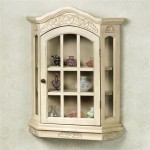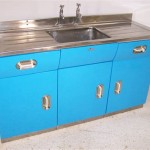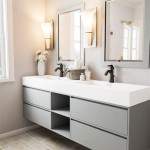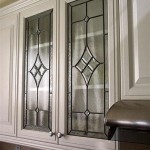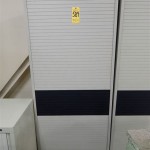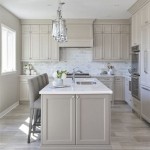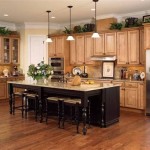Should You Reface or Replace Kitchen Cabinets First? A Comprehensive Guide
Deciding whether to reface or replace kitchen cabinets is a pivotal decision in any kitchen renovation project. Both options offer unique benefits and drawbacks, influencing both the aesthetic outcome and the overall cost. Understanding the nuances of each approach is critical to making an informed choice that aligns with budgetary constraints, design preferences, and the existing condition of the kitchen.
This article provides a comprehensive examination of both cabinet refacing and replacement, outlining the factors to consider when making this important decision. It will delve into the circumstances under which each option is most suitable, exploring the cost implications, time commitments, and potential challenges involved. The goal is to provide readers with the necessary information to determine the best course of action for their individual kitchen remodeling needs.
Assessing the Condition of Existing Cabinets
Before considering either refacing or replacement, a thorough assessment of the existing kitchen cabinets is essential. This involves a detailed inspection of the cabinet boxes, doors, drawers, and hardware. The structural integrity of the cabinets is a primary concern. Warping, water damage, or significant deterioration of the cabinet boxes may indicate the need for replacement rather than refacing.
Examine the cabinet boxes for signs of water damage, particularly around the sink and dishwasher. Look for swelling, discoloration, or crumbling wood. Check the corners and joints of the boxes to ensure they are still securely connected. If the boxes are structurally unsound, refacing will only provide a cosmetic improvement without addressing the underlying issues. In such cases, replacing the cabinets is the more prudent option.
The condition of the cabinet doors and drawer fronts should also be carefully evaluated. If the doors are significantly damaged, delaminated, or outdated, refacing may be a viable option. However, if the doors are structurally unsound, replacement is necessary. Consider the hinges and drawer slides as well. If these components are worn or broken, they will need to be replaced regardless of whether the cabinets are refaced or replaced.
Furthermore, assess the layout of the kitchen. If the existing layout is functional and meets the homeowner’s needs, refacing may be a suitable option. However, if the layout is inefficient or needs to be reconfigured, replacing the cabinets offers the opportunity to optimize the space and improve functionality. This might involve adding new cabinets, changing the configuration of existing cabinets, or incorporating new features such as pull-out shelves or drawer organizers.
In summary, a comprehensive assessment of the existing cabinets should include an evaluation of the structural integrity of the boxes, the condition of the doors and drawer fronts, the functionality of the hardware, and the overall layout of the kitchen. This assessment will provide valuable insights into whether refacing or replacement is the more appropriate course of action.
Understanding Cabinet Refacing
Cabinet refacing involves replacing the existing cabinet doors and drawer fronts while keeping the existing cabinet boxes in place. The exposed surfaces of the cabinet boxes are typically covered with a veneer or laminate that matches the new doors and drawer fronts. Refacing can be a cost-effective way to update the look of a kitchen without the expense and disruption of a complete cabinet replacement.
The refacing process typically begins with the removal of the existing doors, drawer fronts, and hardware. The cabinet boxes are then thoroughly cleaned and prepared for the application of the veneer or laminate. This may involve sanding, filling any imperfections, and applying an adhesive primer. The veneer or laminate is then carefully applied to the exposed surfaces of the cabinet boxes, ensuring a smooth and seamless finish.
New doors and drawer fronts are then installed, along with new hardware such as hinges, knobs, and pulls. The new doors and drawer fronts can be made of a variety of materials, including wood, laminate, and thermofoil. The choice of material will depend on the desired aesthetic, budget, and durability requirements. It is important to select high-quality materials that will withstand daily use and maintain their appearance over time.
Refacing offers several advantages. It is generally less expensive than replacing cabinets, as it avoids the cost of new cabinet boxes. It is also less disruptive, as it does not involve the demolition and removal of existing cabinets. This can be particularly appealing for homeowners who want to minimize the inconvenience of a kitchen renovation.
However, refacing also has limitations. It does not address any underlying structural issues with the cabinet boxes. If the boxes are warped, water-damaged, or otherwise compromised, refacing will not solve these problems. Additionally, refacing does not allow for significant changes to the kitchen layout. If the homeowner wants to reconfigure the kitchen or add new cabinets, replacement is the more suitable option.
In conclusion, cabinet refacing is a viable option for homeowners who are satisfied with the existing layout of their kitchen and whose cabinet boxes are structurally sound. It offers a cost-effective way to update the look of the kitchen without the expense and disruption of a complete cabinet replacement. However, it is important to be aware of the limitations of refacing and to ensure that it is the right solution for the specific needs of the homeowner.
Exploring Cabinet Replacement
Cabinet replacement involves removing the existing cabinets and installing new ones. This is a more comprehensive and costly option than refacing, but it offers greater flexibility in terms of design, layout, and functionality. Cabinet replacement is often the best choice when the existing cabinets are structurally unsound, the kitchen layout needs to be reconfigured, or the homeowner desires a significant upgrade in style and features.
The replacement process begins with the demolition and removal of the existing cabinets. This can be a messy and disruptive process, as it often involves cutting through drywall and disconnecting plumbing and electrical connections. It is important to protect the surrounding areas from dust and debris and to dispose of the old cabinets properly.
Once the old cabinets have been removed, the walls are prepared for the installation of the new cabinets. This may involve patching any holes, leveling the walls, and painting or wallpapering. The new cabinets are then installed, starting with the base cabinets and followed by the wall cabinets. The cabinets are typically secured to the walls with screws and anchors.
After the cabinets have been installed, the countertops, sink, and appliances are reinstalled. This may involve some plumbing and electrical work, as well as adjustments to the countertop and backsplash. Finally, the hardware is installed, and the kitchen is cleaned up.
Cabinet replacement offers several advantages. It allows for a complete transformation of the kitchen, with the ability to change the layout, add new cabinets, and incorporate new features. It also addresses any underlying structural issues with the existing cabinets. New cabinets are typically made of higher-quality materials and are designed to last longer than refaced cabinets.
However, cabinet replacement also has disadvantages. It is more expensive than refacing, as it involves the cost of new cabinet boxes. It is also more disruptive, as it requires the demolition and removal of existing cabinets. This can be a significant inconvenience for homeowners who are living in the house during the renovation.
In summary, cabinet replacement is the best option for homeowners who want to completely transform their kitchen, address underlying structural issues, or reconfigure the layout. It offers greater flexibility and control over the design and functionality of the kitchen. However, it is important to be aware of the cost and disruption involved and to plan accordingly.
Cost Considerations: Refacing vs. Replacement
The cost is a significant factor in deciding between refacing and replacing cabinets. Generally, refacing is less expensive than replacement. The exact cost of each option depends on several factors, including the size of the kitchen, the materials used, and the complexity of the project.
Refacing typically costs 40% to 50% less than replacing cabinets. This cost savings is primarily due to the fact that refacing does not involve the cost of new cabinet boxes. The materials used for refacing, such as veneer or laminate, are also typically less expensive than new cabinet materials.
The cost of refacing will vary depending on the type of materials used. Laminate is generally the least expensive option, while wood veneer is more expensive. The complexity of the project can also affect the cost. For example, if the cabinet boxes need extensive repairs before refacing, this will add to the overall cost.
The cost of replacing cabinets depends on the type of cabinets chosen. Stock cabinets are the least expensive option, while custom cabinets are the most expensive. The size of the kitchen and the complexity of the installation will also affect the cost. Replacing cabinets can also uncover unexpected issues such as plumbing or electrical problems that need to be addressed, adding to the overall expense.
It is important to obtain quotes from multiple contractors before making a decision. The quotes should include a detailed breakdown of the costs, including materials, labor, and any additional fees. Comparing quotes will help to ensure that you are getting a fair price for the project.
In addition to the upfront cost, it is also important to consider the long-term value of each option. Refacing may be less expensive upfront, but it may not last as long as new cabinets. New cabinets are typically made of higher-quality materials and are designed to withstand daily use for many years. Weighing the upfront cost against the long-term value is crucial in making an informed decision.
Time Commitment and Disruption
The time commitment and level of disruption are also important factors to consider when deciding between refacing and replacing cabinets. Refacing is generally a quicker and less disruptive process than replacement.
Refacing typically takes 3 to 5 days to complete, depending on the size of the kitchen and the complexity of the project. The process involves minimal demolition and does not require disconnecting plumbing or electrical connections. This means that the kitchen can still be used for some activities during the refacing process.
Replacing cabinets, on the other hand, can take 1 to 3 weeks to complete, depending on the size of the kitchen and the complexity of the project. The process involves significant demolition and requires disconnecting plumbing and electrical connections. This means that the kitchen will be completely unusable during the replacement process.
The level of disruption can be a significant factor for homeowners who are living in the house during the renovation. Cabinet replacement can create a lot of dust and noise, and it can disrupt the daily routine. Refacing is a less disruptive option, as it involves minimal demolition and does not require disconnecting plumbing or electrical connections.
It is important to discuss the time commitment and level of disruption with the contractor before starting the project. The contractor can provide a detailed timeline and explain the steps involved in each process. This will help to set realistic expectations and to minimize the inconvenience of the renovation.
Consider the impact on daily life when making the decision. If minimizing disruption is a high priority, refacing may be the better option. If a complete transformation is desired and the homeowner is prepared for a longer and more disruptive process, replacement may be the more suitable choice.

Should You Reface Or Replace Cabinets When Remodeling A Kitchen Degnan Design Build Remodel

Refinishing Vs Refacing Replacing Best Option For Your Cabinets

Cabinet Refacing Vs Painting Which Is Right For You

How To Resurface Kitchen Cabinets Forbes Home

Kitchen Cabinet Refacing Vs Replacing Bob Vila

Cabinet Refacing Process And Cost Compared To Painting
Should I Replace My Kitchen Cabinets Or Re Face Them Quora

Refacing Vs Replacing Cabinets How To Decide Lamont Bros

How Much Does Cabinet Refacing Cost In 2024 Forbes Home

Kitchen Cabinets Renovation Vs Reface Homelane Blog
Related Posts


